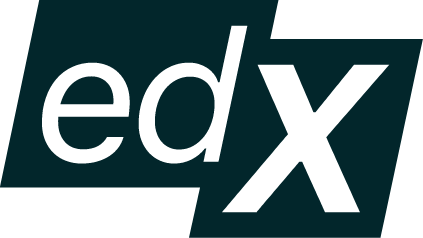
Today, the average attention span of adults is between 7 and 12 seconds. This adds pressure to captivate your audience succinctly and effectively. Your professional brand distills who you are professionally down to its essence and quickly conveys who you are to your target audience.
The guide will help you craft your story to help you communicate your value to employers effectively.
This guide is a complete and in-depth look into developing your professional brand. Read straight through, or use the agenda below to jump between topics.
- What is a professional brand?
- Why do employers care about your professional brand?
- How do I set myself up for success?
- How do I create my professional brand?
- How do I use my professional brand?
What is a professional brand?
Similar to a company’s brand, your professional brand is not your job title or what you do but rather who you are, what you stand for, and what you aspire to do. It encompasses your skills, values, character, and passion. Your behavior and appearance, both online and in person, convey the value you offer and the heart you bring to your work.
Your brand tells employers and potential colleagues what they can expect from you. Your professional brand is experienced in many ways, but the key to a successful and compelling brand is that it comes across as authentic and consistent across different channels and mediums.
Others experience your professional brand in many ways, including:
- In-person interactions
- LinkedIn profile
- Personal appearance or attire
- Resume
- Cover letter
- Elevator pitch
- Interviews
- Email communication
- Social media (if public)
- Online portfolio (if applicable)
Building an intentional professional brand gives you control of your narrative, helps you craft your professional story, and guides how others will perceive you professionally.
Some of the best places to start when approaching your professional brand is a summary statement about yourself. Consider what you hope to be known for. This summary statement can be used and adapted for many different purposes, including your LinkedIn summary, your elevator pitch, or the answer to the interview question, “Tell me about yourself.”
Why do employers care about my professional brand?
To be successful in the job search, you need to stand out from the other candidates vying for the same positions. A great way to do that is with a strong professional brand. Employers want candidates with a clear vision of how they add value to the company and where they want their careers to take them. Don’t make it hard for employers — draw direct connections from your skills and accomplishments to what they are looking for.
How do I set myself up for success?
Before crafting your professional brand, consider the question: who is your target audience? Hint: it’s NOT everyone.
Your professional brand should target your desired industry, job, and passion. Tailoring your message and the words you use creates a brand that shows your understanding of your niche within your industry and maximizes its return. Employers want to see skills and competencies combined with passion, motivation, and heart for the work.
Brainstorm who your target audience is with the following questions:
- What field or industry am I in, or want to be in?
- Who are the people, communities, companies, or industries I want to woo? Whom do I need to find me compelling to get hired?
- What do they need me to deliver?
How do I create my professional brand?
A theme for your professional brand centered around what makes you unique is critical. To help search for the best theme for you, consider the following three elements that employers typically look for:
Industry-specific skills – Do you excel in one particular area? How have you demonstrated your skills?
Soft skills – Do you have strong teamwork, collaboration, communication, or problem-solving skills?
Passion – Do you love what you’re doing? Have you displayed evidence of that passion?
In addition to those three standard buckets, why you entered this field can often be a great way to frame your professional brand. Maybe you switched careers, a prior work experience led you to this path, or something from your personal life propelled you to this. What sets you apart?
After you’ve found your theme, include all key elements, including your past, present, and future.
Your Past – Review your work and education history. Think about your major accomplishments and the skills you’ve built over time. Bullet out a few ideas.
Your Present – Think about your current role, education program, or skills from a field-specific perspective. What do you enjoy doing? What are you good at?
Your Future – What job are you seeking? What would you love to do in your next step professionally? Jot down a few bullet points.
Once you have your theme and have identified the key elements to include, start to craft your story. When drafting this summary of your professional brand, use no more than 75-150 words and touch upon key elements that showcase what makes you a top candidate for a potential employer. It will take some time to refine and boil down your professional brand into a concise summary that feels right.
Remember that this summary can and should be trimmed or expanded depending on the purpose, audience, and platform on which it appears, such as in your resume/CV, LinkedIn profile, professional websites, emails, networking conversations, or interview answers.
Expert advice
“The summary is the ‘movie preview’ of your resume. Share the highlights that differentiate you from other candidates – your unique background or how you approach projects and problems.”
– Deanna P., career expert at edX

How do I use my professional brand?
Adapt your brand statement for your resume/CV, LinkedIn summaries, or portfolio (if you have one).
Adapting for your resume/CV
- Do not include first- or third-person pronouns.
- Omit details listed elsewhere on the resume (e.g., education, a full list of technical or industry skills, specific achievements, or projects). The exception is if you want to emphasize a qualification, such as your recent program, at the top of the resume/CV.
- Your summary should be three to five phrases highlighting the role you’re seeking, your achievements, and your soft skills. If an employer has two candidates with the same industry skills, they will defer to the summary to see if something sets them apart from the other candidate.
Resume/CV summary example 1:
Marketing professional with a background in [industry or academic subject matter]. Trained at the [school name] and earned a [certificate/degree name] in [program name]. Innovative problem-solver passionate about product marketing and focused on user and development. Strengths in creativity, teamwork, and building projects from ideation to execution.
Resume/CV summary example 2:
Passionate and solutions-driven [title name] with a [program name] Certificate from [school name]. Experience in 3D design with a combination of strong communication, collaboration, problem-solving, and analytical skills. Ability to design, build, and maintain websites from conception to production. Works well in a fast-paced and diverse team environment developing solutions and exceeding expectations.
Adapting for your LinkedIn summary
- Using first-person is ideal, but omitting all pronouns is okay. Avoid third-person since it sounds awkward when listed on your own profile.
- There is flexibility in formatting on LinkedIn. You can expand the content if desired, but avoid listing every detail about your experience since that is outlined in the sections beneath your profile.
- Feel free to include an invitation to connect at the end, especially if you hope to expand your network.
LinkedIn summary examples:
Interested in what a successful application of a personal brand looks like? Check out our Sample LinkedIn summaries for more.
Adapting for your portfolio bio
- You can include personal interests or hobbies that relate to the job you seek or how they fuel and inspire your work.
- You can include an invitation to contact with a link to the portfolio’s “contact” section or page.
Portfolio bio example:
I’m a product manager able to leverage my background in customer service to deliver client satisfaction through leadership and technical specifications. I recently earned a certificate in [program name] from the [school name] and previously obtained an [MBA or program title] from [school name].
With each project, I aim to understand how best to engage users for an impactful user experience while keeping stakeholder initiatives in mind. I practice fiscal responsibility to optimize business solutions and product outcomes.
When not coordinating projects and promoting efficiency, I enjoy photographing natural landscapes, trying new recipes, or honing my skills with short courses. Fun fact: I built my first website as a photo portfolio (i.e., a shrine) for my cat, Jinx. No matter how far the UI has come, she still doesn’t approve of it.
I’m excited to leverage my skills as part of an efficiency-driven team. Contact me to chat about our next project here [insert link to your email address].
Check out our Networking guide, Elevator pitch guide, and LinkedIn profile guide for more information on how to put your professional brand into action.



